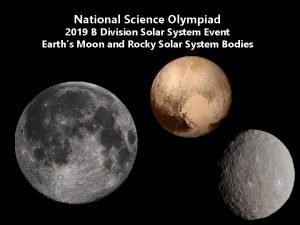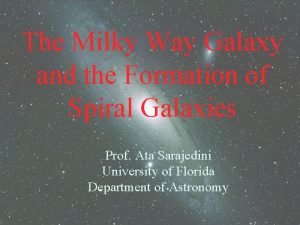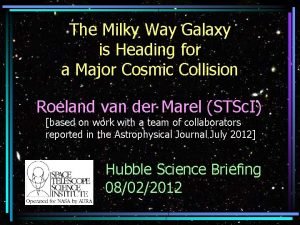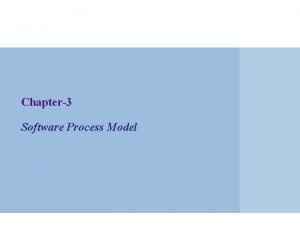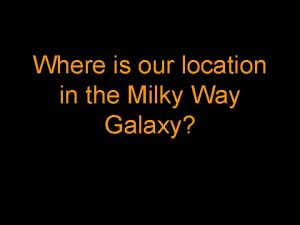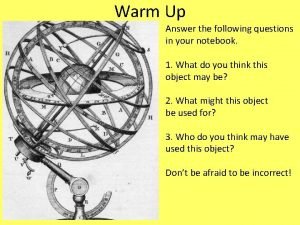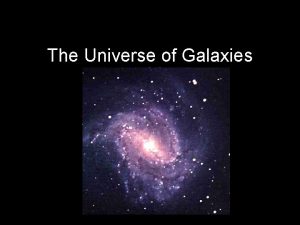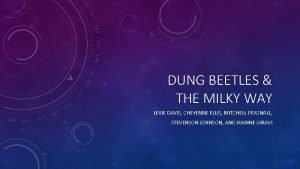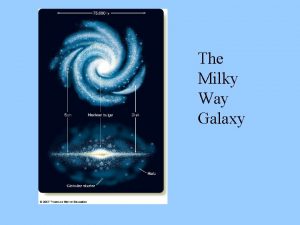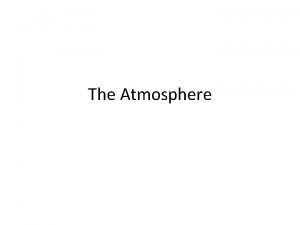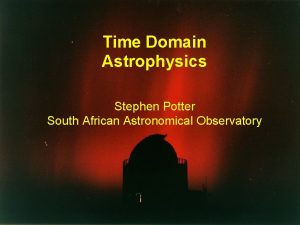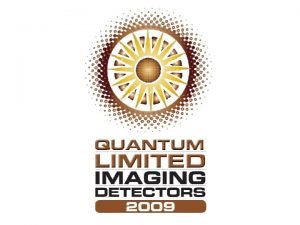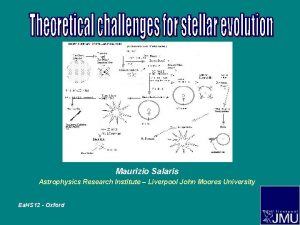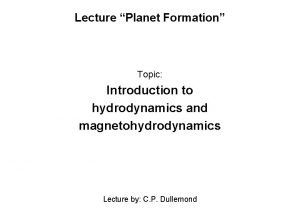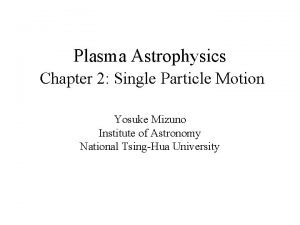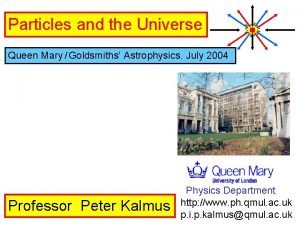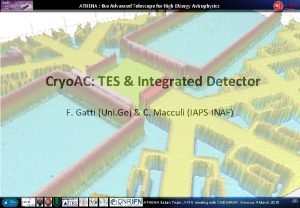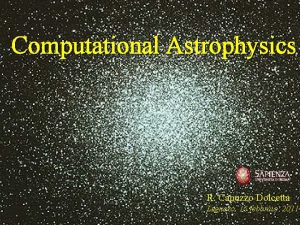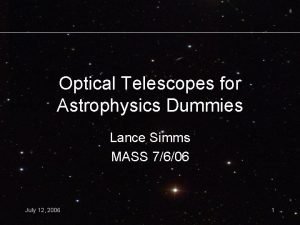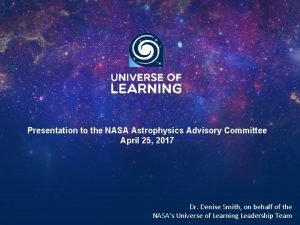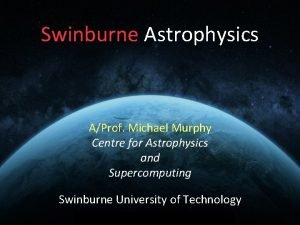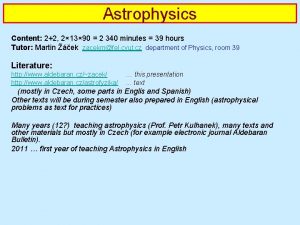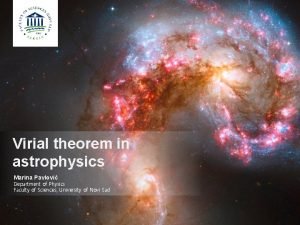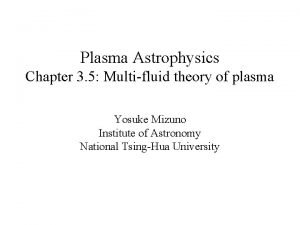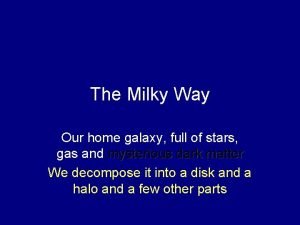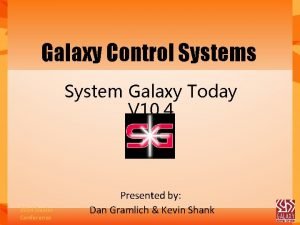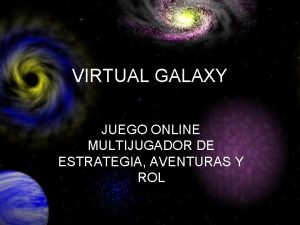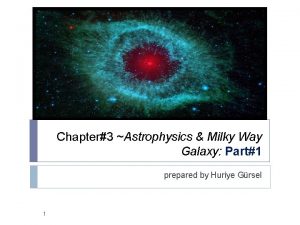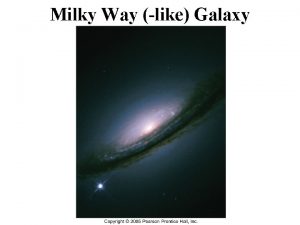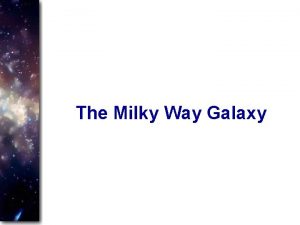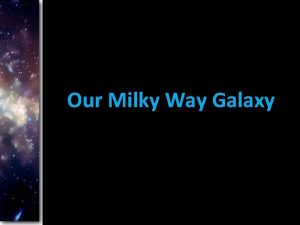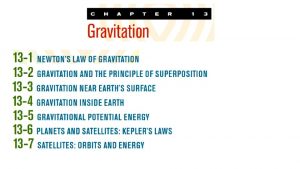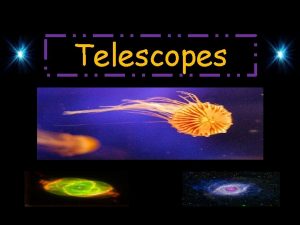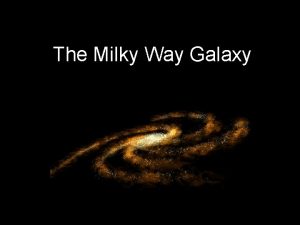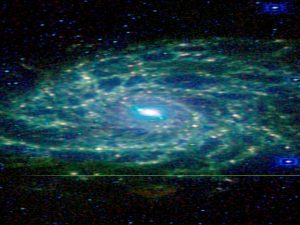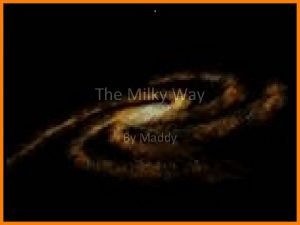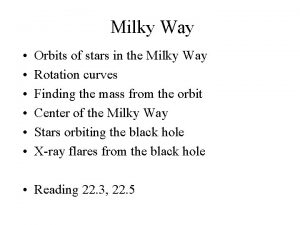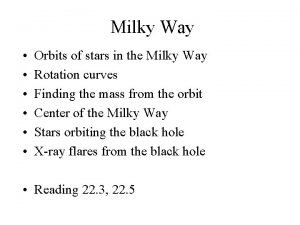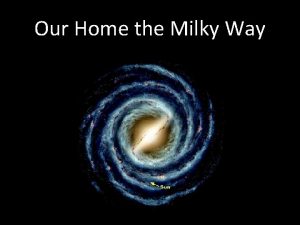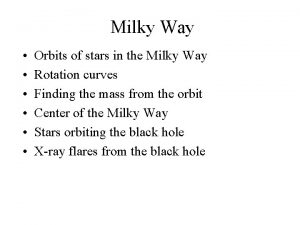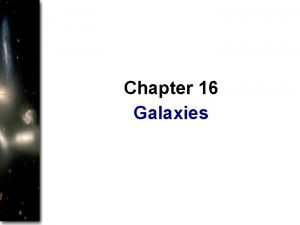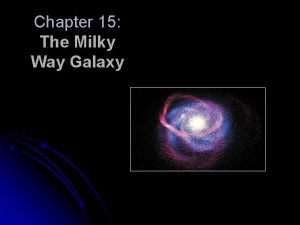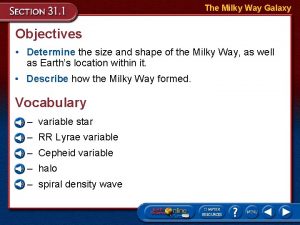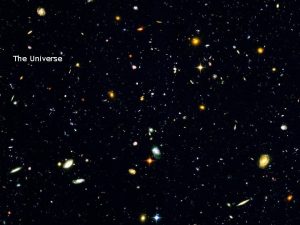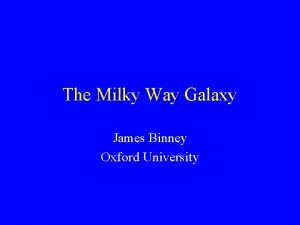Chapter3 Astrophysics Milky Way Galaxy Part 2 prepared













































- Slides: 45

Chapter#3 ~Astrophysics & Milky Way Galaxy - Part #2 prepared by Huriye Gürsel 1

Topics to be Covered � BIG BANG THEORY & � 2 MILKY WAY GALAXY

Testing the Big Bang Model Prediction: The universe is expanding Observation: Galaxies are moving apart from each other (1929) 3

Evidence for an Expanding Universe The spectrum of hydrogen gas is the unique fingerprint of that element Hydrogen lamp 4

Evidence for an Expanding Universe When we see a repeat of the pattern we saw in the lab, we know hydrogen is present Orion Nebula 5

Evidence for an Expanding Universe We see the same repeating pattern of lines in a galaxy, but displaced to the red Galaxy UGC 12915 6

Evidence for an Expanding Universe The further the galaxy, the more the shift to the red Galaxy UGC 12508 7

Evidence for an Expanding Universe The greater the red shift, the faster the galaxy is receding Galaxy KUG 1750 8

Evidence for an Expanding Universe The red shift is caused by the expansion of space. Galaxy KUG 1217 9

Evidence for an Expanding Universe The red shift is evidence for an expanding universe Galaxy IRAS F 09159 10

Testing the Big Bang Model Prediction: If the universe was denser, hotter, in past, we should see evidence of left-over heat from early universe. Observation: Left-over heat from the early universe. (Penzias and Wilson, 1965) 11

Testing the Big Bang Model Prediction: A hot, dense expanding universe, should be predominantly hydrogen, helium. Observation: Universe is ~75% hydrogen, ~25% helium by mass The Sun: 74. 5% H, 24% He by mass 12 Cecilia Payne

Testing the Big Bang Model Prediction: An expanding universe is evolving over time. If we look at the early universe, it should appear different. Observation: Distant galaxies less evolved, physically and chemically. 13

Testing the Big Bang Model Observation: 90% of matter is an unknown form: Dark Matter. Refine: A new and unknown form of matter exists. But its gravity works the same way, and its presence is needed to explain how the universe looks. Vera Rubin 14

Evidence for Dark Energy - supernovae as distance indicators - step 1 A dying star becomes a white dwarf. 15

Evidence for Dark Energy - supernovae as distance indicators - step 2 The white dwarf strips gas from its stellar companion…. 16

Evidence for Dark Energy - supernovae as distance indicators - step 3 …. and uses it to become a hydrogen bomb. Bang! 17

Evidence for Dark Energy - supernovae as distance indicators - step 4 The explosion is as bright as an entire galaxy of stars…. 18

Evidence for Dark Energy - supernovae as distance indicators - step 5 …. . and can be seen in galaxies across the universe. 19

“Normal Matter” 4% Dark Energy 73% Dark Matter 23% 20

Homogeneity & Isotropy � The evidence that the Universe becomes smooth on large scales supports the use of the cosmological principle. It is therefore believed that our large-scale Universe possesses two important properties, homogeneity and isotropy. � Homogeneity is the statement that the Universe looks the same at each point, while isotropy states that the Universe looks the same in all directions. 21

The Big Bang Theory

Time begins � The universe begins ~13. 7 Billion years ago � The universe begins as the size of a single atom � The universe began as a violent expansion � All matter and space were created from a single point of pure energy in an instant � Video!

~ 3 minutes After Big Bang �The universe has grown from the size of an atom to larger than the size a grapefruit �E=mc 2 �energy froze into matter according to Albert Einstein’s equation. �This basically says that like snowflakes freezing, energy forms matter into clumps that today we call protons, neutrons and electrons. �These parts later form into atoms

Several Hundred Thousand Years After Big Bang � ATOMS form (specifically Hydrogen and its isotopes with a small amount of Helium. ) � The early Universe was about 75% Hydrogen and 25% Helium. It is still almost the same today.

200 to 400 Million Years After Big Bang � 1 st stars and galaxies formed

~ 4. 6 billion years ago � Our Solar system forms

Evidence of Big Bang 1) Universal expansion and Hubble’s Law 2) 3 degree background radiation 3) Quasars 4) Radioactive decay 5) Stellar formation and evolution 6) Speed of light and stellar distances 28

Background Radiation a) Noise radiation (static) is evenly spread across space b) The amount of radiation matched predictions c) C. O. B. E satellite confirmed for the entire universe that noise radiation (static) is evenly spread

Quasars - super large (solar system size) galactic cores that put out more light than whole galaxies � Only found 10 -15 billion light years away � Found nowhere else � Nothing exists past them

Radioactive Decay � Radiometric dating – gives us the age of items from the decay of radioactive materials found within the object � Moon rocks have been dated and found to be older than Earth � Gives us an estimated time that Earth and the Moon formed

Stellar Formation and Evolution � We observe the life cycles of stars across the universe using tools such as satellites and telescopes � we view stars form, burn and explode

Speed of Light and Stellar Distances �The speed of light is a universal constant of 300, 000 km/s² �We observe stars millions/billions of light-years away �A light-year is the distance that light travels in 1 year – the light we see today from a star 500 light years away is 500 years old �The furthest stars away are 1015 billion light years away �We have telescopes that can see further, but there isn’t

Types of Galaxies 34

Milky Way Galaxy 35

36

37

Do Stars Move? � Video. . . 38

Is the Sun at Center of Our Galaxy? �As late as the turn of the 20 th century, astronomers believed that the Sun was effectively at the center of the galaxy, which was synonymous with the center of the universe. � The work of Harlow Shapley and Henrietta Leavitt in 1918 displaced the Sun to the outer regions of the galaxy, and observations by Hubble and others proved that the Milky Way was just one galaxy of many (1923). 39

Testing the Sun-centered Model Prediction: Sun at center of Cosmos Observation: Sun is not at center of universe (1918) Observation: The galaxy is not the entire universe (1923) 40

LASTLY – Everything Has a Beginning?

Conclusions • Big Bang model describes our current understanding of the universe. • New discoveries, such as dark matter and accelerating expansion (Dark Energy), lead us to refine our model, but there is no crisis in our understanding (yet). • Science is an ongoing process - forcing us to test our model through prediction and observation. The more tests it passes, the greater is our confidence in it. 42

The Future of Cosmology: Beyond Einstein • What powered the Big Bang? • What is Dark Energy? • How did the Universe begin? 43

44

References � Lawrence Krauss, A Universe from Nothing � Andrew Liddle, Introduction to Modern Cosmology 45
 Spiral irregular and elliptical galaxies
Spiral irregular and elliptical galaxies Critical density
Critical density Solar system science olympiad
Solar system science olympiad Closest galaxy to milky way
Closest galaxy to milky way Milky way galaxy sketch
Milky way galaxy sketch What is incremental process model
What is incremental process model Chapter3
Chapter3 Our location in the milky way
Our location in the milky way Where is the solar system located in the milky way
Where is the solar system located in the milky way The milky way
The milky way Democritus milky way
Democritus milky way Milkyway fonterra
Milkyway fonterra Dung beetle milky way
Dung beetle milky way Milky way description
Milky way description Nemertea diagram
Nemertea diagram Milky appearance of plasma
Milky appearance of plasma Pr��ce v cestovn�� kancel����i praha
Pr��ce v cestovn�� kancel����i praha Physical properties of oxygen
Physical properties of oxygen Time domain astrophysics
Time domain astrophysics Rit astrophysics
Rit astrophysics Liverpool astrophysics
Liverpool astrophysics Mhd equations
Mhd equations Astrophysics
Astrophysics Queen mary astrophysics
Queen mary astrophysics Advanced telescope for high energy astrophysics
Advanced telescope for high energy astrophysics Astrophysics
Astrophysics Astrophysics for dummies
Astrophysics for dummies Working with models
Working with models Swinburne astrophysics
Swinburne astrophysics Astrophysics syllabus
Astrophysics syllabus Virial theorem in astrophysics
Virial theorem in astrophysics Astrophysics equations
Astrophysics equations When i was one i had just begun the day i went to sea
When i was one i had just begun the day i went to sea Two way anova
Two way anova One way anova vs two way anova
One way anova vs two way anova Walk this way talk this way
Walk this way talk this way Explain threaded binary tree in data structure
Explain threaded binary tree in data structure Two way anova
Two way anova Beda one way anova dan two way anova
Beda one way anova dan two way anova Conventional software engineering
Conventional software engineering One way table and two way table
One way table and two way table 2 way anova example
2 way anova example Galaxy questions
Galaxy questions Our home galaxy
Our home galaxy Galaxy control systems dealer
Galaxy control systems dealer Virtual galaxy
Virtual galaxy


